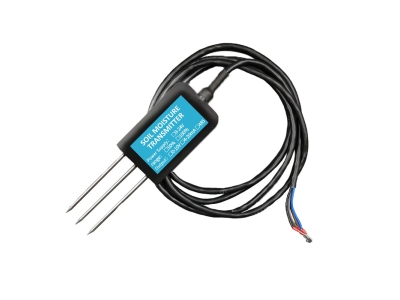
Several components of soil sensor
we will explore the different components of soil sensors and their importance in providing valuable insights into soil health.

we will explore the different components of soil sensors and their importance in providing valuable insights into soil health.
Soil plays a vital role in agriculture, providing the foundation for plant growth and nutrient uptake. In order to optimize agricultural production and ensure sustainable land management, it is crucial to obtain accurate information about the soil environment. Soil sensors have emerged as essential tools in this regard, helping farmers and researchers monitor various soil parameters. These sensors consist of several components that work together to measure and analyze soil characteristics. In this article, we will explore the different components of soil sensors and their importance in providing valuable insights into soil health.

1. Sensor Probe:
The sensor probe is the main component of a soil sensor, responsible for directly interacting with the soil. It is usually composed of metal or plastic and is inserted into the ground to measure the desired soil parameter. The probe design varies depending on the parameter being measured, such as moisture, temperature, or nutrient levels. For example, a moisture sensor probe may consist of electrodes that measure the electrical conductivity of the soil, while a temperature sensor probe may contain a thermistor to measure soil temperature. The accuracy and reliability of the sensor probe are crucial in obtaining precise measurements.
2. Sensor Electronics:
The sensor electronics are responsible for converting the measured physical or chemical signal from the probe into a readable format. These electronics include components such as analog-to-digital converters, microcontrollers, and signal amplifiers. The analog-to-digital converter converts the analog signal from the probe into a digital signal that can be processed by the microcontroller. The microcontroller then processes the data and transmits it to a display or a data logging system. Signal amplifiers may also be used to amplify weak signals from the probe, ensuring accurate measurements.
3. Power Source:
A power source is essential for the operation of soil sensors. Most soil sensors are powered by batteries, which provide the necessary electrical energy to run the sensor electronics. The power source should be chosen carefully to ensure the long-term operation of the sensor without frequent battery replacements. Some sensors may also use solar panels as a power source, making them more sustainable and environmentally friendly. The power source should be compatible with the sensor electronics and provide a stable power supply to ensure accurate and reliable measurements.
4. Data Display and Transmission:
Once the soil parameters are measured and processed by the sensor electronics, the data needs to be displayed or transmitted for further analysis. Many soil sensors are equipped with a digital display that shows real-time readings of the measured parameter. This allows farmers and researchers to monitor the soil conditions on-site and make immediate adjustments if needed. In addition to the display, some sensors also have the capability to transmit data wirelessly to a computer or mobile device. This enables remote monitoring and data collection, making it easier to analyze trends and patterns in soil health.
5. Calibration and Calibration Standards:
Calibration is an essential step in ensuring the accuracy and reliability of soil sensors. Calibration involves comparing the sensor readings with known reference values to establish a relationship between the sensor output and the actual soil parameter. Calibration standards, which are samples with known values of the soil parameter, are used for this purpose. These standards are designed and manufactured to have precise and consistent values, allowing for accurate calibration of the sensors. Regular calibration is necessary to account for any drift or changes in sensor performance over time.
6. Data Logging and Analysis:
Data logging and analysis are crucial components of soil sensors, allowing for the collection and interpretation of data over time. Some sensors are equipped with internal memory or storage devices that can store a significant amount of data. Others may have the capability to transmit data to an external data logging system, such as a computer or cloud-based platform. The collected data can then be analyzed to identify trends, patterns, and correlations between soil parameters. This analysis can provide valuable insights into soil health, allowing farmers and researchers to make informed decisions about irrigation, fertilization, and land management practices.
Conclusion:
Soil sensors are essential tools in modern agriculture and land management practices. They provide valuable information about various soil parameters, helping farmers optimize crop production, conserve water, and protect soil health. The accurate and reliable measurement of soil parameters relies on the proper functioning of several components, including the sensor probe, sensor electronics, power source, data display and transmission, calibration, and data logging and analysis. By understanding these components and their importance, farmers and researchers can make informed decisions and take appropriate actions to ensure sustainable and productive soil management practices.